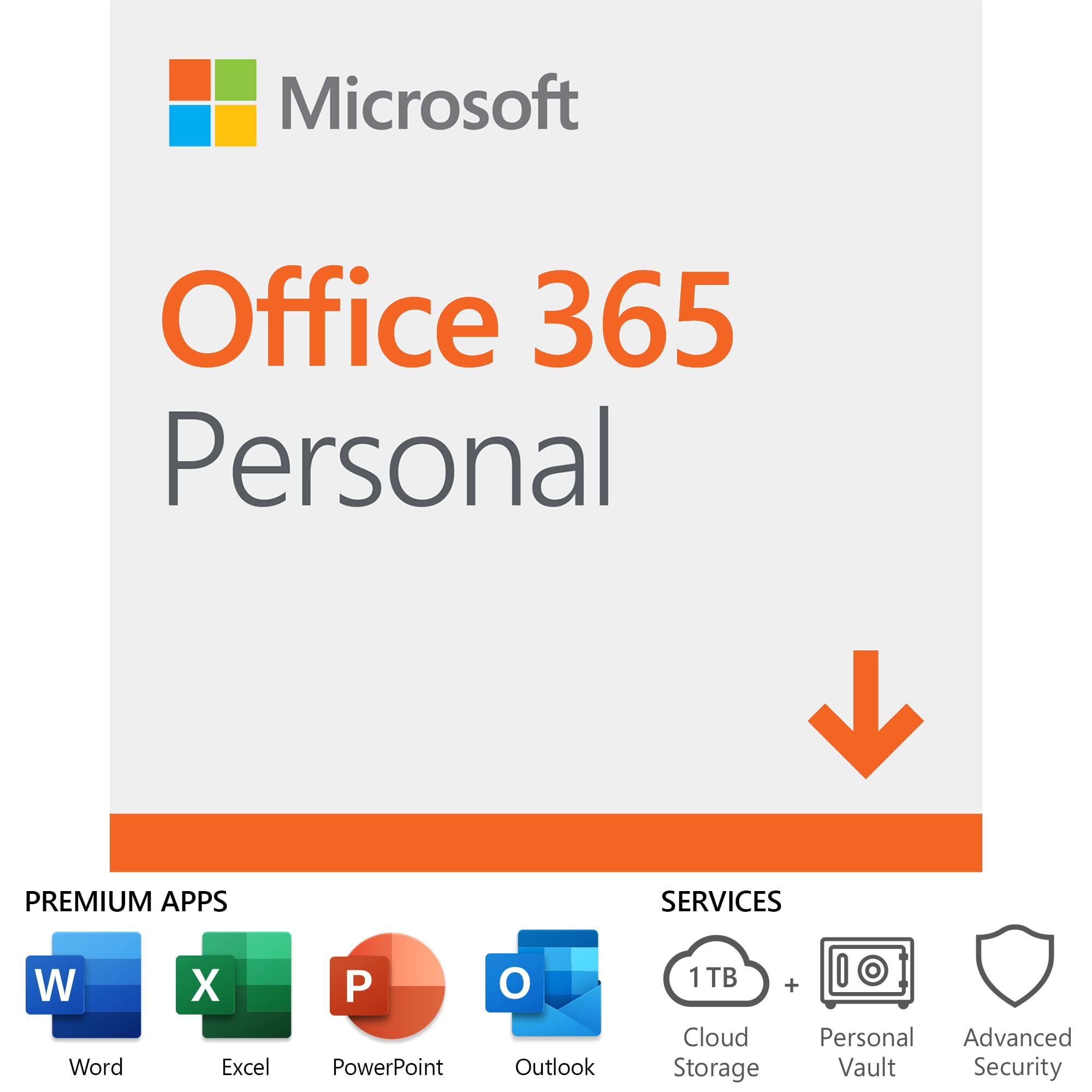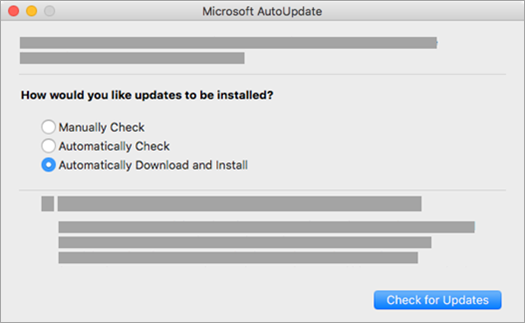Install Office on a different computer or tabletIf you don’t have any installs left, you can so you can use it on another computer or tablet. Install Office on a PC or Mac.On the computer or Windows tablet where you want to install Office, go to.Under Install Information, click Install.If you’re installing on a Mac, after Office downloads, click MicrosoftOffice2011.dmg in the Downloads folder to start the installation.Install Office on an iPadOn your iPad, download, and from the app store. Microsoft office. Visio 2013 Excel 2013 Word 2013 PowerPoint 2013 Publisher 2013 Access 2013 Word for Mac 2011 Office 2013 Project Professional 2013Each Office 365 Solo subscription comes with Office installs for 2 Macs or PCs and 2 tablets.Before you install Office, to make sure your computer or tablet can run Office.If you have trouble installing,.
Microsoft Office 2016 365 for Mac. Forget fussing with updates with this one-year subscription of Microsoft Office 2016 365 for Mac. This computer-, tablet- and smartphone-friendly Office 365 for Mac suite contains Office 2016 versions of Word, Excel, PowerPoint, OneNote and Outlook that work on your OS X machine, iPhone or iPad (Outlook 2016 is not compatible with iPhone). If you installed Office 2016 for Mac back in September but haven't been able to update the suite since, here's a look at some troubleshooting tips. How to Fix Microsoft Office AutoUpdate for Mac. Microsoft AutoUpdate may offer Office 2016 for Mac updates even though you have Office for Mac 2008 installed on your Mac. Upon accepting the update, Office for Mac 2008 gets automatically upgraded to Office 2016. This can occur if you are using version 3.14.0 of Microsoft AutoUpdate. STATUS: FIXED. This issue has been fixed in Microsoft.
- Open Microsoft Office 365 Autoupdate Mac In Terminal 1
- Microsoft Office Autoupdate Mac
- Microsoft Autoupdate Mac Interface
- Microsoft Autoupdate Mac Pop Up
Existing Office 2016 for Mac customers will be seamlessly upgraded to 64-bit versions of Word, Excel, PowerPoint, Outlook, and OneNote as part of the August product release (version 15.25). This affects customers of all license types: Retail, Office 365 Consumer, Office 365. Double-click the file that you downloaded in step 5 to place the Microsoft Office 2011 14.7.7 Update volume on your desktop, and then double-click the Microsoft Office 2011 14.7.7 Update volume to open it. This step might have been performed for you.
Rebuild Office 2016 For Mac Database. In Office 2011, a common way to fix this was to rebuild the Office 2011 database (also known as creating a new identity). However, Microsoft has removed this feature in Office 2016 for Mac claiming Office database rebuilds are now done automatically on Mac.
-->Applies to:Office for Mac, Office 2019 for Mac, Office 2016 for Mac
Microsoft AutoUpdate (MAU) version 3.18 and later includes the msupdate command-line tool. This can be used to start the update process for Microsoft applications produced for Mac, such as Office. The tool is primarily designed for IT administrators so that they have more precise control over when updates are applied. You can download the latest version of MAU from this link.
msupdate works by sending Apple Events to the MAU daemon. On macOS 10.14 Mojave and later, you may see a privacy prompt when running msupdate for the first time. If you are using an enterprise management tool such as Jamf Pro, you should deploy a Privacy Preferences Policy Control (PPPC) payload to pre-approve access. Samples of such a payload can be downloaded from here.
Use the following steps to start using the tool:
- Open the Terminal application
- Enter
cd /Library/Application Support/Microsoft/MAU2.0/Microsoft AutoUpdate.app/Contents/MacOS - Run
./msupdate --help
The following options are displayed:

Examples of how to use msupdate
- Display the current configuration parameters for AutoUpdate:
./msupdate --config - Display the current configuration parameters in machine-readable format:
./msupdate --config --format plist - List all available updates:
./msupdate --list - Download and install all available updates:
./msupdate --install - Download and install the latest updates for Word, Excel, and PowerPoint:
./msupdate --install --apps MSWD2019 XCEL2019 PPT32019 - Download and install a version-specific update for Outlook:
./msupdate --install --apps OPIM2019 --version 16.17.180090901
Application identifiers
Open Microsoft Office 365 Autoupdate Mac In Terminal 1
The following table lists the applications for Mac supported by AutoUpdate. The identifier is used when specifying the --apps parameter. When specifying multiple applications on the command-line, separate identifiers with a space.
| Application | Latest version1 | 2016 version2 |
|---|---|---|
| Word | MSWD2019 | MSWD15 |
| Excel | XCEL2019 | XCEL15 |
| PowerPoint | PPT32019 | PPT315 |
| Outlook | OPIM2019 | OPIM15 |
| OneNote | ONMC2019 | ONMC15 |
| MAU | MSau04 | MSau04 |
| OneDrive | ONDR18 | |
| Teams | TEAM01 | |
| Skype for Business | MSFB16 | |
| Remote Desktop | MSRD10 | |
| Intune Company Portal | IMCP01 | |
| Defender ATP | WDAV00 | |
| Edge Canary | EDCN01 | |
| Edge Dev | EDDV01 | |
| Edge Beta | EDBT01 | |
| Edge Stable | EDGE01 |
1 These identifiers are used for Office 2019 for Mac, either a retail or a volume licensed version, and for Office for Mac (from an Office 365 plan) running on macOS version 10.12 (Sierra) or higher.
2 These identifiers are used for Office 2016 for Mac, either a retail or a volume licensed version, and for Office for Mac (from an Office 365 plan) running on macOS version 10.11 (El Capitan) or earlier.
Note
- If an update is pending for MAU itself, that update must be applied before any applications can be updated.
- Identifiers are not case-sensitive when run interactively from the command-line, but use the character casing from the table above when running from a management tool such as Jamf Pro.
Related topics
- Update history and release notes for Office for Mac
Summary: Compares different ways to update Office 365 ProPlus, including automatically from the Internet or from an on-premises location.
Microsoft Office Autoupdate Mac
There are four ways that admins typically apply updates for Office 365 ProPlus:
Automatically from the Internet
Using Microsoft Endpoint Configuration Manager
Automatically from an on-premises location
Microsoft office. By installing an updated version of Office 365 ProPlus
Which way is right for your organization depends on how much administrative effort you want to expend and how much control that you want to have over the update process.
In most cases, you use the Office Deployment Tool or Group Policy to configure the appropriate update settings.
Important
Because individual updates aren't available for Office 365 ProPlus, you can't use Windows Update or Windows Server Update Services (WSUS) to download and apply individual updates to Office 365 ProPlus.
Apply updates automatically from the Internet to Office 365 ProPlus
This is the default setting for Office 365 ProPlus. For example, if your users install Office 365 ProPlus themselves from the Office 365 portal, Office 365 ProPlus is configured to get updates automatically from the Internet. No additional user or administrative configuration is needed.
Even if you use the Office Deployment Tool to deploy Office 365 ProPlus to your users, you can configure updates to be applied automatically from the Internet.

This option might be a good choice for your organization if you have users who travel or work remotely and don't connect to the corporate network regularly. It's also the choice that requires the least amount of administrative effort. But, this option gives you the least amount of control over the update process.
Using Microsoft Endpoint Configuration Manager
Microsoft Endpoint Configuration Manager has the ability to manage Office 365 client updates by using the Software Update management workflow. You can use Configuration Manager to update Office 365 ProPlus, Visio Online Plan 2 (previously named Visio Pro for Office 365), Project Online Desktop Client, and Office 365 Business. This gives you full control over the update deployment process, e.g. when which devices will receive a specific update. Please refer to Manage updates to Office 365 ProPlus with Microsoft Endpoint Configuration Manager for an in-depth description.
Apply updates automatically from an on-premises location to Office 365 ProPlus
You can configure Office 365 ProPlus to get updates automatically from a location on your network, such as a network share. You can configure the update location by using the Office Deployment Tool or Group Policy.
This is a good option if you want more control over the version of Office 365 ProPlus that users have installed. For example, even if the June version of Office 365 ProPlus is available, you might want your users to continue using the May version. You might want to do this because you want to test to make sure that your line-of-business applications work with the June version.
You'll have to use the Office Deployment Tool to download updated versions of Office 365 ProPlus from the Internet to your local network. After it's downloaded, you can place the updated version on a network share that is close to the users.
Apply updates by installing an updated version of Office 365 ProPlus
Instead of using automatic updates, you can deploy an updated version of Office 365 ProPlus to your users by using the Office Deployment Tool. This option re-installs Office 365 ProPlus. You can use the Office Deployment Tool together with software distribution tools, such as Microsoft Endpoint Configuration Manager or Microsoft Intune.
This option is useful if you want to control which version of Office 365 ProPlus users have, and you want to control which users get updated and when they get updated. This option provides the most control, but also requires the most administrative effort and has a high impact on user downtime and network load.
Microsoft Autoupdate Mac Interface
If you decide to use this option, you'll disable automatic updates. You can control that setting by using either the Office Deployment Tool or Group Policy.